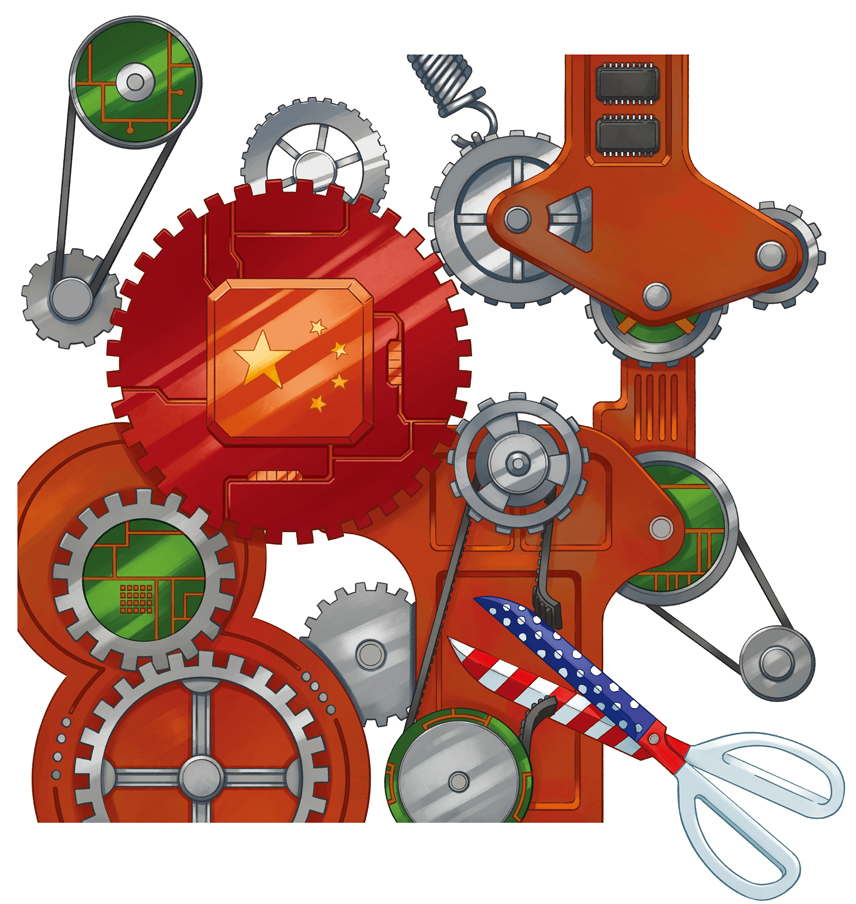Mobile e-commerce is booming in China, so much so that traditional PC based e-commerce sites are feeling the heat.
“Laptop + Digital Camera – RMB 899!
Laptop +Mobile Phone – RMB 2,000!
Take advantage of these amazing package deals NOW!”
This is not a late-night TV shopping program. Despite the shrill insistence by shopping network anchors that there’s never been an easier way to buy (“now!”), there’s a far simpler (and much less dramatized) way to shop. On mobile platforms customers only need to lift a finger and click, and the deal is done.
With the rise of the mobile internet, e-commerce companies have greater access to customers than ever before. Customers log onto websites when waiting for the bus or the subway, place an order while in transit and then share the products and shopping information via social networks, indirectly marketing the product. Furthermore, when customers go shopping in physical malls they simultaneously engage in online shopping to compare prices and check whether online stores have the same product, which undermines traditional brick and mortar retailing. So what really characterizes mobile e-commerce?
Liu Qiangdong, founder of Chinese e-commerce site, Jingdong Mall (JD.com, formerly known as 360buy.com), reiterated many times that for JD.com mobile e-commerce will be everything in the future. According to an iResearch article, Jack Ma, Founder and former CEO of the Alibaba group, said, “Taobao Mobile will outperform Taobao.”
These claims are not baseless. According to the latest data from iResearch, mobile e-commerce already accounts for 42% of China’s total mobile internet usage, surpassing mobile value-added services and mobile games. In sharp contrast to the unprofitable mobile apps sector, PC makers and entrepreneurs alike are completing for a slice of the mobile e-commerce pie.
Digging for Mobile Gold
Mobile e-commerce is developing at a much faster rate as a subsector within the e-commerce sector in China as a whole, with mobile e-commerce transaction volume accounting for 7.6% of total e-commerce in the first quarter of 2013. This amount also indicates a sharp increase in the adoption of mobile e-commerce when compared to the transaction volume of the previous year, which was just 0.7% of total e-commerce transactions. Total e-commerce transactions in the first quarter of 2013 reached RMB 26.66 billion, according to iResearch.
China’s top mobile shopping platforms are Taobao, JD.com and Tencent, which are all traditional e-commerce companies, with Taobao and JD.com dominating approximately 80% of the market. These platforms were not the first to expand into the mobile space, but they each already had a large established customer base, good brand reputations and high customer loyalty, which gave the platforms a strong advantage.
Taobao’s mobile business began to thrive in 2008 and now it has 300 million customers. This March, Taobao released the 2012 Taobao Mobile E-commerce Data Report, which reports that transactions on Taobao Mobile have increased by 600%, representing a proportion in the total transactions which has increased from 1.77% to 6.87%. The value of Taobao mobile transactions of the year reached 940 million and the daily visitors number reached 64.85 million. Jack Ma once said via Weitao (Taobao’s internal Twitter equivalent), “Taobao Mobile will outperform Taobao.” Ma obviously had great hopes for the mobile platform.
JD.com, on the other hand, only started to operate its mobile terminal in 2011. Currently, its transactions account for approximately 5 % of the total sales. Although 3C products sell well through traditional e-commerce, transactions of fast-moving consumer goods including food, bags and wine on JD.com’s mobile terminal have increased dramatically.
Customers First
In terms of the market size and growth, mobile e-commerce is an exciting avenue. But almost all e-commerce companies are facing a problem: the conversion rate on mobile platforms is much lower than on PCs. Furthermore, the cost of acquiring new customers is higher than that of PC terminals, while the per customer transaction size is lower. For example, one-third of traffic on Amazon’s Chinese equivalent, Dangdang comes from mobile users, while only 1% of purchases come from mobile users.
Xu Lei, Vice-President of JD.com, once observed that the difference between mobile e-commerce and regular e-commerce: mobile e-commerce users prefer to pay on delivery, 20% higher than users of PC terminals. Sales of products such as mobile phones, maternity and baby products, and airplane tickets account for a high percentage of purchases. Users of mobile platforms like to be able to check their order status.
There are mainly two types of users: one is users who transfer from PC platforms to mobile. They are mature online shopping users and are familiar with online shopping processes as well as payment methods. They are users of both PC and mobile terminals. The other type of users are those who have no convenient access to computers, who jump online shopping on PCs and start out by using mobile e-commerce. They are called the “Three Lows Group” and are characterized as ‘young’, ‘low income’ and with ‘minimal work experience’.
No matter which type of users, the needs of consumers are essentially the same. “Consumers want more options, lower prices and better service. These needs never change,” says Brian Hui, Vice-President at Amazon China, who is deeply convinced that these needs form the core of e-commerce.
As to why mobile e-commerce now holds a relatively low conversion rate, it is often the case that the PC terminal-based e-commerce platforms have not adapted their display features while developing mobile terminal-based applications. Chen Nian, CEO of e-commerce clothing retailer VANCL, remarked that VANCL on mobile platforms was still at the stage of transplanting PC functions and lacked originality in development.
The question of how to transform mobile e-commerce sites from a browsing platform into the sales channel has been a persistent problem for all e-commerce companies. While large volumes of web traffic and large user numbers are sought after in e-commerce, additional benchmarks of user stickiness, user retention and activity have been developed as new indices to measure the operational capability of e-commerce companies.
Xu Lei from JD.com thinks that the customer-first concept is integral to the development of the mobile e-commerce. In fact, mobile platform users have a higher purchasing power. JD.com’s data reveals that over 60% of its mobile users are likely to make a second purchase, which means people using mobile terminals are stickier than those using a PC.
This group of users has their own behaviors. For example, they prefer to login using wifi and 9 PM is the peak time slot. This results in differences in the ways in which users browse the internet. With portable mobile devices, they can be used under any circumstance, which leads to new changes in users’ shopping experiences. For instance, it facilitates the price comparison between similar products, providing more convenience while shopping. Moreover, the difference in the screen size and the time distribution of browsing behaviors between PC and mobile devices, as well as the display of mobile applications must evolve from the conventional model of PC-based e-commerce to satisfy the needs of users. With a small screen, the size of ads will naturally be reduced, which makes the search engine and hot pick service more desirable for users. However, this also sets a test for data analysis capability in mobile e-commerce. Traditional processes for a business to convert traffic into sales are no longer viable options.
Growth in the volume of transactions made via mobile platforms will depend on a breakthrough in mobile payment options. Zhang Xiaowei, the founder of Maimaibao (MMB), says that during the seven years since the company was established, less than 2% of transactions are completed via MMB’s online payment platform. On one hand, people in the third- and fourth-tier cities have not formed the habit of paying online; on the other hand, the security of paying via mobile phones cannot be guaranteed currently. “It takes at least two or three years to persuade users to make payment on mobile terminals,” says Zhang. Supplementation or Subversion?
Thus far, mobile e-commerce has developed in a haphazard way but has bright prospects. Liu Qiangdong once said that JD.com’s greater investment in mobile terminal applications is not a result of the fact that the growth rate of the mobile internet is higher than that of PCs. It’s because JD.com considers the mobile internet as the future of e-commerce. “It is not replenishment but subversion,” remarked Liu. In other words, the development of mobile e-commerce will do to traditional e-commerce what e-commerce has done to brick and mortar retailing.
As the leader in the mobile e-commerce, Taobao has invested heavily in developing Facebook and Twitter-like products as well as absorbing traffic from mobile purchases across the Alibaba group. Meanwhile, Alibaba is constantly making acquisitions of various mobile apps such as DDcoupon, UCWeb, Hupan, Laiwang, Amap, Umeng and Momo. This gives Taobao Mobile an increasing number of web traffic sources and conversion platforms
Taobao Mobile and the traditional Taobao platform will interact with each other. “Strategically speaking, Taobao Mobile follows PC Taobao and constitutes a part of Taobao’s whole platform strategy, which is aimed to satisfy the needs of PC users,” says Lu Zhongtao, Senior Manager, Taobao Mobile.
Liu Qiangdong claimed that within three years the whole information framework of the company would be based on mobile internet. A new structure would be created containing the top, middle and lower level database applications within a cloud system. “There will be no conception of PC and mobile internet for JD.com.”
E-commerce companies, which grow rapidly in mobile application sales, also increase their inputs. VANCL recently established a mobile innovation division devoted to enhancing the communication between service guides and customers when browsing detailed pages. The guides may help clients pick out and purchase goods and deliver orders by means of text, sounds or images. In the future, users may be allowed to subscribe to product lines. By collecting data and analysis on customer behaviors, the company will be able to recommend products to customers in accordance with their specific demands. VIPshop released four products on mobile terminals, including Weiping Special Sales, Weiping Mobile Group, Mobile Ailishe and Weiping Fashion. The founder, Shen Yaxi, hopes VIPshop’s model of instant purchase on PC applications will be successfully transplanted onto mobile terminals.
During the recent Global Mobile Internet Conference (GMIC), Zhang Xiaowei, founder of Maimaibao, shared his experiences of social marketing in the mobile e-commerce, such as finding dense pockets of users, tapping clients’ purchasing power efficiently and carrying out an in-depth analysis of customer behavior. According to Zhang, if a certain ad occurs repeatedly on the screen but fails to attract the user’s attention, then an alternative strategy should be pursued.
Many internet analysts hold the view that in 2013, there will be fierce competition in the mobile application market along with the further development in online mobile shopping. But the real contest is between the platform-based e-commerce companies whose struggle, in effect, remains the theme of the whole e-commerce industry.
This article was originally published in CKGSB’s Chinese language magazine Cheung Kong (长江)

















